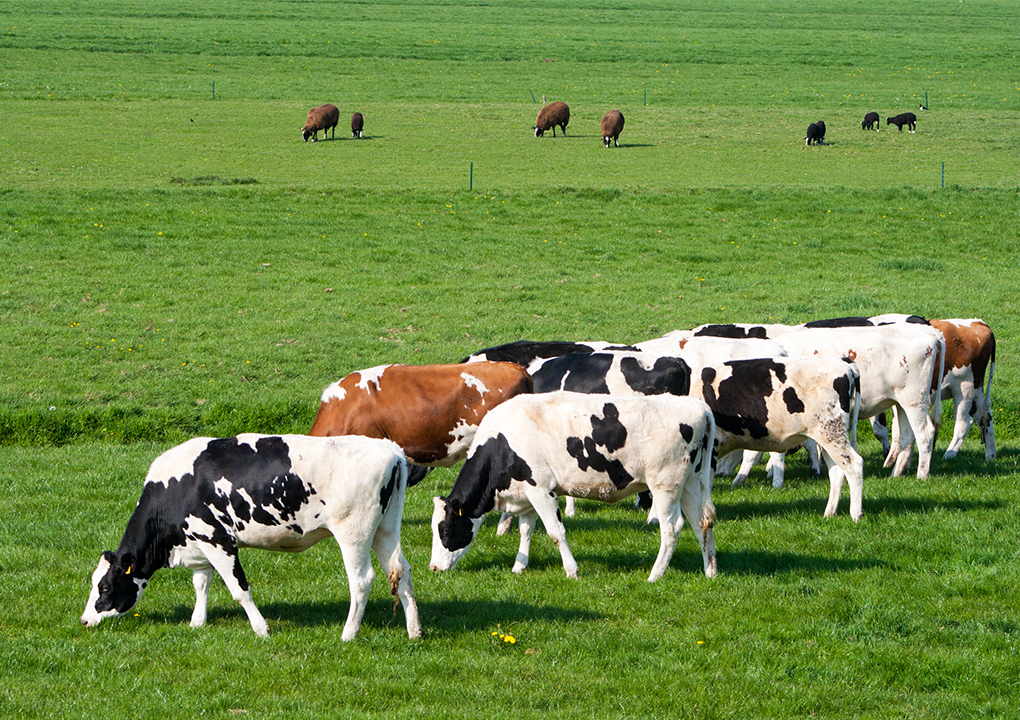Mixed farming is a system of farming in agriculture, which involves the growing of crops and rearing of animals (livestock) on the same piece of land, on a particular season. This system of farming is practiced all around the world, it helps to ensure sustainable agriculture. This read will take you through the advantages and disadvantages of mixed farming.
In mixed farming, the crops and animals complement each other, as the crops provide feed and fodder for the animals, while the animals contribute to soil fertility through manure, and sometimes their labor is used in the fields.
This integration helps farmers diversify their income sources, reduce risks, and efficiently use resources, making it a popular and practical method of farming.
Farmers have developed innovative strategies to make their farms work. By maximizing their space, they’ve been able to raise both crops and livestock simultaneously. For example; a mixed farm may grow cereal like maize, wheat and also rear cattle, pig and poultry.
Mixed farming is different from mixed cropping or multiple cropping as the latter only involves the growing of different crop varieties on a farm without the presence or usefulness of farm animals.
Read also: Continuous cropping system, a bad idea?

Advantages of mixed farming
- Diversified Income: Mixed farming allows farmers to earn income from multiple sources, such as selling crops, livestock products (milk, meat, eggs), and surplus animals.
- Risk Reduction: Since mixed farming involves various activities, it spreads the risk associated with unpredictable factors like weather conditions, market fluctuations, or diseases affecting specific crops or animals.
- Nutrient Cycling: Livestock manure can be used as natural fertilizer for crops, enhancing soil fertility and reducing the need for artificial fertilizers.
- Increased Productivity: The combination of crops and animals can create a synergistic effect, leading to improved productivity and yields on the same area of land.
- Sustainable Resource Use: Mixed farming optimizes resource utilization by recycling waste products and making efficient use of available land, water, and nutrients.
- Weed and Pest Control: Livestock grazing can help manage weeds, reducing the need for herbicides, while some animals, like ducks, can control pests in rice fields.
- Improved Soil Structure: Livestock activities, such as grazing, can help prevent soil compaction and maintain a healthy soil structure.
- Crop-Livestock Integration: Crop residues can serve as animal feed, reducing the need for purchased fodder and enhancing the overall farm productivity.
- Increased Resilience: The diversity of mixed farming systems makes them more adaptable to changing conditions, including climate variations and market demands.
- Sustainable Livelihoods: Mixed farming can provide a sustainable livelihood for farmers, fostering rural development and food security while preserving traditional farming practices.
Disadvantages of mixed farming
- Complexity of Management: Managing both crops and livestock simultaneously can be challenging and requires diverse knowledge and skills. Farmers need to balance the needs of different animals and crops effectively.
- Capital Investment: Starting a mixed farming operation may require a higher initial investment due to the need for diverse infrastructure, equipment, and animal housing.
- Market Volatility: Dealing with multiple products can expose farmers to fluctuations in market prices for both crops and livestock, leading to uncertain income.
- Disease Spread: Close proximity of crops and animals can increase the risk of disease transmission between them, requiring vigilant biosecurity measures.
- Feed and Fodder Concerns: Providing adequate and balanced feed for livestock year-round can be challenging, especially during adverse weather conditions or seasonal variations.
- Labor Intensive: Mixed farming can demand more labor compared to specialized farming practices, as it involves care for both animals and crops.
- Land Requirements: To be effective, mixed farming often requires a larger land area to accommodate both crops and livestock, making it less suitable for farmers with limited land access.
- Competing Priorities: Crop and animal needs may clash, especially during critical stages like planting and harvesting, requiring careful planning and time management.
- Skill Demand: Farmers need a wide range of skills and knowledge about different crops and livestock, which can be daunting for newcomers or those with limited experience.
- Regulatory Challenges: Dealing with multiple aspects of farming can subject farmers to complex and varying regulations related to crop production, animal welfare, and environmental concerns.
Factors Influencing Success in Mixed Farming
The success of mixed farming depends on a combination of factors that need to be carefully considered and managed by farmers. Adopting an integrated approach that harmonizes both crop and livestock components requires strategic planning, efficient resource utilization, and sound agricultural practices. Here are some key factors that influence the success of mixed farming:
- Farm Size and Layout: The size of the farm and its layout play a crucial role in determining the scope and scale of mixed farming activities. Larger farms can accommodate a more diverse range of crops and livestock, allowing for better integration and resource utilization.
- Climate and Agro-ecological Conditions: The local climate and agro-ecological conditions significantly impact the selection of suitable crops and livestock species. Farmers must choose species that are well-adapted to the prevailing climate and capable of thriving in the given environment.
- Market Demand and Access: Understanding market demand and having access to reliable markets for both crops and livestock products is essential for profitability. Farmers should align their production with market trends and ensure effective marketing strategies.
- Crop-Livestock Complementarity: Selecting complementary crops and livestock is critical to maximize benefits in mixed farming. For example, certain crop residues can serve as animal feed, and livestock manure can enhance soil fertility for crops.
- Nutrient Management: Efficient nutrient management is crucial for maintaining soil fertility and achieving high crop yields and livestock productivity. Proper use of organic and inorganic fertilizers, as well as managing animal waste, is essential.
- Water Availability and Management: Access to adequate water resources and effective water management practices are vital for both crops and livestock. Proper irrigation systems and water conservation techniques can enhance the overall farm productivity.
- Knowledge and Skills: Successful mixed farming requires a diverse set of knowledge and skills encompassing both crop cultivation and animal husbandry. Farmers need to stay updated with the latest agricultural practices and technologies.
- Infrastructure and Equipment: Adequate infrastructure, such as animal housing, crop storage facilities, and machinery, is essential for the smooth operation of mixed farming systems.
- Disease and Pest Management: Vigilant disease and pest management are critical to prevent outbreaks that could impact both crops and livestock. Integrated Pest Management (IPM) techniques can be beneficial in this regard.
- Financial Management: Efficient financial management is crucial for the success of mixed farming. Farmers must carefully plan their budgets, investments, and cash flow to ensure economic stability and growth.
- Time Management and Labor: Mixed farming can be labor-intensive, and effective time management is essential to balance the needs of crops and livestock. Adequate labor availability and proper task planning are necessary for successful operations.
- Supportive Policies and Extension Services: Government policies that encourage mixed farming and provide support through subsidies, training programs, and extension services can significantly contribute to the success of farmers in adopting integrated practices.
Read also: See why you should be a farmer
The bottom line
Mixed farming is like the most practiced farming system across Africa and even the world as a whole, as this system of agriculture is very beneficial to both plants, animals and farmers. The advantages and disadvantages of mixed farming have been given above, you can simply add yours at the comment section.

so how can it ensure food security?
Food security is all about the availability and accessibility of food. Mixed farming will make help improve crop yield, cause you’ll probably use waste from your animal farm as manure for plants or plants as feeds for animals… which will lead to reduction in cost of production, and easy production, which will make food available.. which is food security
But you can also use animal dung from mono farming systems as animals are raisee too.
There’s only monocropping or monoculture system and no monofarming system